By Christopher Miskimon
The late afternoon sun still shone brightly overhead as four destroyers raced eastward toward the island of Guadalcanal. The quartet of vessels—Amagiri, Yugiri, Asagiri, and Shirakumo—was 70 miles from the island and racing there at its best speed. The destroyers were making a “Tokyo Express” run. Each ship was packed with reinforcing troops for the forces struggling to throw the U.S. Marines back into the ocean. If they arrived safely it would add to the Marines’ troubles, which included infantry assaults, snipers, air attacks, and bombardment from offshore.
As the destroyers grew closer, a pair of American Douglas SBD Dauntless dive bombers on a scouting patrol appeared overhead. The pilots, Jesse “Dog” Barker and Harry Liffner, spotted the warships and radioed back to Guadalcanal. As the American fliers back on the island began preparing a strike, Barker and Liffner attacked the small convoy on their own. Strangely the four ships did not try to maneuver or evade the attack, but just steamed ahead in line. Barker was credited with hitting one of the destroyers on the stern, causing it to leak oil and lose power.
Back on Guadalcanal, 11 SBDs took off to attack the convoy. Flown by both Navy and Marine crews, these planes arrived over the Japanese force in half an hour. Just after 6 pm they began their attacks. Shirakumo was soon struck by an American bomb, followed by Asagiri, the leading Japanese ship. It was hit amidships by a 1,000-pound bomb; moments later it exploded, sinking quickly and taking the convoy’s commander to the bottom of the ocean. Shirakumo began trailing oil. Two other pilots dove on Yugiri, and one of their bombs landed almost directly amidships, starting a large fire. Amagiri was the only ship to inflict damage in return, shooting down one of the SBDs. The rest of the American fliers returned to Guadalcanal. Amagiri took Shirakumo under tow, and all three remaining ships returned home without landing any troops.
 The Navy pilots on Guadalcanal were part of Flight 300, a group of fliers from the aircraft carrier Enterprise sent to Guadalcanal to reinforce the island’s defenses when their carrier was damaged and forced to leave the area. The motley collection of Army, Navy and Marine aircraft gathered on the island came to be known as the Cactus Air Force, so called due to Guadalcanal’s code name of Cactus. The story of the contributions these pilots made in the eventual victory is told in The Battle for Hell’s Island: How a Small Band of Carrier Dive-Bombers Helped Save Guadalcanal (Stephen L. Moore, NAL Caliber, New York, 2015, 512 pp., maps, photographs, notes bibliography, index, $27.95, hardcover).
The Navy pilots on Guadalcanal were part of Flight 300, a group of fliers from the aircraft carrier Enterprise sent to Guadalcanal to reinforce the island’s defenses when their carrier was damaged and forced to leave the area. The motley collection of Army, Navy and Marine aircraft gathered on the island came to be known as the Cactus Air Force, so called due to Guadalcanal’s code name of Cactus. The story of the contributions these pilots made in the eventual victory is told in The Battle for Hell’s Island: How a Small Band of Carrier Dive-Bombers Helped Save Guadalcanal (Stephen L. Moore, NAL Caliber, New York, 2015, 512 pp., maps, photographs, notes bibliography, index, $27.95, hardcover).
The pilots who crewed these dive bombers were a cross-section of American society. Many had been students who entered flight training in the years just before the war started. The enlisted men who rode in the planes were all trained as radio operators; some did so specifically to gain flight status. During missions they also operated the SBD’s defensive machine guns, placed to fire at any following enemy planes. These men formed close-knit teams who flew, fought, and sometimes were shot down together during desperate missions against Japanese forces.
Combat missions involved flying against warships and transports and braving antiaircraft fire to drop their bombloads before returning to Henderson Field to refuel and rearm. Adding to the danger were waves of Japanese fighter planes flying cover for their ships and bombers hitting the airfield. The hazards of combat combined with the poor living conditions, substandard diet, and disease threat meant few of these men left the island without suffering injury or sickness. Despite all this, the naval aviators continued to do their jobs, flying mission after mission until the Japanese gave up on Guadalcanal. It was another step on the road to Tokyo and victory in the Pacific War.
This book is a tribute to the dive bomber crews who helped turn the tide of war in the Pacific. It is a remarkable story of both endurance and courage, and the author weaves together their story in a readable, articulate style full of the small details that make such a tale fascinating to read. Guadalcanal is generally seen as the Marine Corps’ fight and with good reason. However, this book brings to light the small but significant contributions of a hitherto unknown group of Navy men who did their part in one of World War II’s turning point battles.
 M4 Sherman Tanks: The Illustrated History of America’s Most Iconic Fighting Vehicles (Michael E. Haskew, Voyageur Press, Minneapolis, MN, 2016, 223 pp., photographs, index, $40, hardcover)
M4 Sherman Tanks: The Illustrated History of America’s Most Iconic Fighting Vehicles (Michael E. Haskew, Voyageur Press, Minneapolis, MN, 2016, 223 pp., photographs, index, $40, hardcover)
The Sherman tank is both an iconic symbol and an item of controversy in the history of World War II. It was the ubiquitous American tank of the war, serving on all fronts with every American force to take the field. It also partially equipped every major Allied nation’s armored forces. For a nation fighting on multiple fronts, all of which were thousands of miles away from the factories, the M4 was almost ideal. It was reliable, easy to maintain, and maneuverable. Shermans were light enough to be shipped long distances and durable enough to last from the beaches of Normandy to the Rhine River without needing a major overhaul, something no Tiger tank could do. They were mass produced and steadily improved throughout the war.
Despite these advantages, the Sherman had its drawbacks and its critics. It was one of the best tanks in the world in 1942, but the pace of German tank development quickly outpaced its design. The M4’s standard 75mm gun had only middling antitank performance, and the armor was too thin to resist many of the weapons arrayed against it. Even improved models were still considered vulnerable. In truth, the Sherman had both faults and strengths, but modern popular media has chosen to focus on its shortcomings.
This book takes all of this into account and gives a balanced, detailed account of the M4’s history. The author acknowledges the tank’s shortcomings while highlighting the extraordinary versatility of the design and the men who crewed them. The writing is full of interesting vignettes covering the Sherman’s development, manufacture, and combat service. The illustrations are equally fascinating; photographs are mixed with period advertisements, movie posters, and line drawings to show not only how the Sherman was used but how it was represented in popular culture at the time. The overall layout makes the book easy to read; both text and imagery keep the reader turning the pages.
 No One Avoided Danger: NAS Kaneohe Bay and the Japanese Attack of 7 December 1941 (J. Michael Wenger, Robert J. Cressman, and John F. Di Virgilio, Naval Institute Press, Annapolis, MD, 2015, 208 pp., maps, photographs, notes, bibliography, index, $34.95, hardcover)
No One Avoided Danger: NAS Kaneohe Bay and the Japanese Attack of 7 December 1941 (J. Michael Wenger, Robert J. Cressman, and John F. Di Virgilio, Naval Institute Press, Annapolis, MD, 2015, 208 pp., maps, photographs, notes, bibliography, index, $34.95, hardcover)
The attack on Pearl Harbor was a harrowing day for American service members in Hawaii. The naval base suffered extensive loss of life and damage. The experience sits deeply in the American consciousness even today. But Pearl Harbor was not the only facility to come under attack that dreadful morning. Naval Air Station Kaneohe Bay was a distant peripheral base situated some 15 miles northeast of Pearl Harbor. It was even separated from Pearl by the green but imposing Ko’olau Mountains. Despite this distance, Kaneohe Bay was attacked that morning by Japanese carrier planes, destroying a number of Consolidated PBY Catalina flying boats among other damage. Smoke billowed into the air from the numerous heavy fires started during the attack. The sailors and Marines at the station did all they could to fight back, save their wounded, and preserve what was left of the station.
This new work is part of the Pearl Harbor Tactical Studies Series, which preserves and presents the history of December 7, 1941, in as great a detail as possible. The authors conducted interviews, searched archives, translated Japanese documents, and conducted expert analysis. The result is a coherent in-depth study of an important piece of that day’s events. The illustrations cover both American and Japanese participants, the attack, and the aftermath, including the burial of a Japanese flyer killed in the action. The events at Kaneohe Bay have long been given short shrift in the overall study of the Pearl Harbor attack; this book redresses that imbalance.
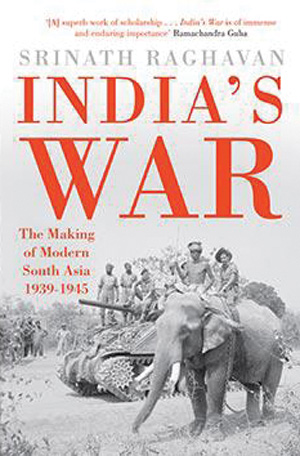 India’s War: World War II and the Making of Modern South Asia (Srinath Raghavan, Basic Books, New York, 2016, 560 pp., maps, photographs, notes, bibliography, index, $35.00, hardcover)
India’s War: World War II and the Making of Modern South Asia (Srinath Raghavan, Basic Books, New York, 2016, 560 pp., maps, photographs, notes, bibliography, index, $35.00, hardcover)
The Indian Army served across the globe during World War II. Its war began in 1939 with a simple message from India’s governor that India would support England in the struggle against Nazi Germany. Later the war expanded with the entry of Imperial Japan. Over the course of the war, the Indian Army served in North Africa, the Middle East, Italy, and Southeast Asia. It protected its own borders before taking the war to the Japanese in Burma and elsewhere. Not only did 2.5 million soldiers serve in its army, but millions more Indians supported them in the nation’s war industries. This was the largest all-volunteer army in history; it not only defended its homeland but also helped save the rest of the world.
The story of India during World War II is relatively unknown in the West, and this book goes far to redress that imbalance. It explains not only how India helped win the war, but also how its efforts prepared it for the postwar world and India’s expanding role in it. The author includes assessments of India’s military, political, economic, and industrial capacities and development. It is an all-encompassing work that gives a detailed look at India during the war.
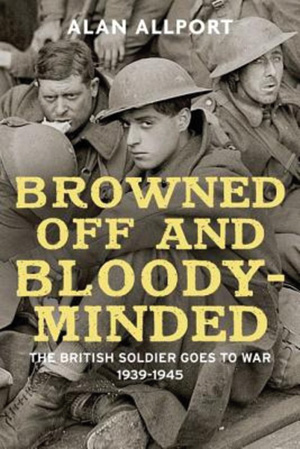 Browned Off and Bloody-Minded: The British Soldier Goes to War 1939-1945 (Alan Allport, Yale University Press, New Haven, CT and London, UK, 2016, 395 pp., photographs, notes, bibliography, index, $40.00, hardcover)
Browned Off and Bloody-Minded: The British Soldier Goes to War 1939-1945 (Alan Allport, Yale University Press, New Haven, CT and London, UK, 2016, 395 pp., photographs, notes, bibliography, index, $40.00, hardcover)
The British Army swelled to some 3.5 million strong during World War II. The vast majority went from civilian to soldier almost overnight. They had to leave their families, jobs, and homes to enter the comparatively strange world of the military. Many felt this generation of young men to be soft and lazy, not up to the task of defeating Nazi Germany. To the world’s benefit this turned out be pessimistic and wrong. The men and women of the British Army went on prove they were fully capable of the difficult task ahead.
This book is a social history of the British soldier at war. It reveals how they adapted to the necessities of martial life and how England’s army, like the American one, had to adapt to the citizen-soldiers it created. The United Kingdom’s Commonwealth culture also presented issues of class, race, and even nationality requiring disparate elements from different nations to cooperate. The author looks at the British Army with a new bent. Rather than a straightforward history of the war, he gives the reader a story focused on those who made up that army and carried out its mission.
 The Battle of the Atlantic: How the Allies Won the War (Jonathan Dimbleby, Oxford University Press, Oxford, UK, 2016, 560 pp., maps, notes, bibliography, index, $34.95, hardcover)
The Battle of the Atlantic: How the Allies Won the War (Jonathan Dimbleby, Oxford University Press, Oxford, UK, 2016, 560 pp., maps, notes, bibliography, index, $34.95, hardcover)
Control of the Atlantic Ocean was vital to the Allies’ victory in World War II. Having such control allowed them to move vital supplies to the United Kingdom, the springboard for attacks against the Axis. It also permitted freedom of Allied movement around the European periphery, choosing when and where they would land on the Continent. This forced the Germans to spread defensive assets across the coastline, never sure where an attack would come.
This control of the sea came at a high cost and after a long struggle. The German U-boat campaign nearly brought England to its knees. Combating it involved ships, aircraft, spies, intelligence analysts, politicians, and scientists. It took years to get the upper hand against the Nazi submarine fleet, but a combination of Anglo-American cooperation, new technology, and better tactics put paid to the German effort and allowed their opponents the freedom of action they needed to achieve victory.
This general history of the Atlantic naval war provides the reader with a supremely detailed and in-depth study of the entire campaign. It covers the gamut from talks between Prime Minister Winston Churchill and President Franklin D. Roosevelt to the actions of individual ships and their crews. The major personalities, events, and actions are related with good detail and insightful analysis.
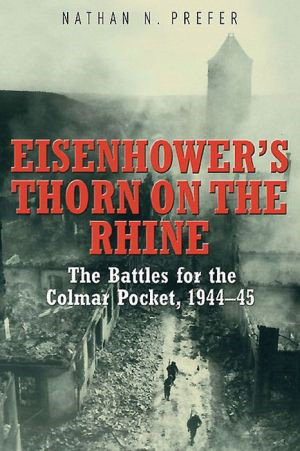 Eisenhower’s Thorn on the Rhine: The Battles for the Colmar Pocket, 1944-45 (Nathan Prefer, Casemate Publishing, Havertown, PA, 2015, 350 pp., maps, photographs, appendices, notes, bibliography, index, $32.95, hardcover)
Eisenhower’s Thorn on the Rhine: The Battles for the Colmar Pocket, 1944-45 (Nathan Prefer, Casemate Publishing, Havertown, PA, 2015, 350 pp., maps, photographs, appendices, notes, bibliography, index, $32.95, hardcover)
The city of Colmar sat on the southern approaches to the Rhine River and the German Reich. The Sixth Army Group comprising of the 7th U.S. and 1st French Armies began a concerted effort to take Colmar and the surrounding area in December 1944. They were up against the German 19th Army, like most Nazi formations a mixed bag of experienced veterans and half-trained recruits. They defended a region of rough hills and ruined towns in the depths of a cold winter, showing great determination and courage in holding off the Allied attacks. It took until well into 1945 for the French and more than four American divisions to overcome the German resistance. Most of it went unheralded at the time, overshadowed by the Ardennes fighting to the north.
The difficult fighting in the Colmar Pocket is brought to vivid life in this new work. Details of many small actions are woven into the overall narrative, enabling the reader to get a sense of the hardship and cost the fighting in this region brought for the soldiers of both sides. Clear maps and good appendices provide added detail.
 Warbird Factory: North American Aviation in World War II (John Fredrickson, Zenith Press, Minneapolis, MN, 2015, 224 pp., photographs, appendices, notes, index, $40.00, hardcover)
Warbird Factory: North American Aviation in World War II (John Fredrickson, Zenith Press, Minneapolis, MN, 2015, 224 pp., photographs, appendices, notes, index, $40.00, hardcover)
Between 1938 and 1944, North American Aviation (NAA) made more aircraft than any other company in America, over 40,000 planes. Their main factory was located in Inglewood, California, in the Los Angeles area. Their three main products were the AT-6 Texan two-seat trainer, the P-51 Mustang fighter, and the B-25 Mitchell medium bomber, among others. The Inglewood facility was assisted by other plants in Kansas and Texas. Together they fed the Allies’ great hunger for combat aircraft to defeat the Axis worldwide. NAA was a major part of the “Arsenal of Democracy.”
The story of NAA’s great factories is laid out in this new photobook. Hundreds of images tell the story, many of them from the company’s archives, now owned by Boeing. These pictures show how NAA’s diverse wartime workforce, including women, African Americans, and Asian Americans all pulled together to produce some of the most complex machines of the era. The accompanying text completes the tale, covering the events, personalities, and actions which carried NAA forward into the annals of history.
New and Noteworthy
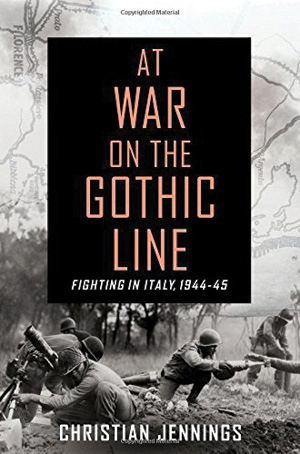 US Navy Carrier Aircraft vs IJN Yamato Class Battleships: Pacific Theater 1944-45 (Mark Stille, Osprey Publishing, 2015, $18.95, softcover) Yamato and Musashi were the most powerful battleships ever built, but they never faced enemy battleships in combat. Both were lost to carrier aircraft in harrowing battles.
US Navy Carrier Aircraft vs IJN Yamato Class Battleships: Pacific Theater 1944-45 (Mark Stille, Osprey Publishing, 2015, $18.95, softcover) Yamato and Musashi were the most powerful battleships ever built, but they never faced enemy battleships in combat. Both were lost to carrier aircraft in harrowing battles.
At War on the Gothic Line: Fighting in Italy 1944-45 (Christian Jennings, Thomas Dunne Books, 2016, 384 pp., maps, photographs, notes, bibliography, index, $27.99, hardcover) A narrative of the harsh fighting experienced on the Italian Peninsula along the rugged German defenses of the Gothic Line. Includes accounts from both sides of the battle.
In Defense of Freedom: Stories of Courage and Sacrifice of World War II Army Air Forces Flyers (Wolfgang W.E. Samuel, University Press of Mississippi, 2015, $29.95, hardcover) The stories of 27 airmen are told in this gripping study of aerial combat. Technical details flow seamlessly with narratives of the action.
Field Marshal: The Life and Death of Erwin Rommel (Daniel Allen Butler, Casemate Publishers, 2015, $32.95, hardcover) An in-depth study of a complex man whose battlefield acumen was mixed with blind obedience to Hitler, an obedience he eventually foreswore at the cost of his life.
Return of the Dambusters: The Exploits of World War II’s Most Daring Flyers After the Flood (John Nichol, Overlook Press, 2016, $35.00, hardcover) The Royal Air Force’s No. 617 Squadron gained fame as the Dambusters. This book covers their continued achievements after their most famous mission.
Donovan’s Devils: OSS Commandos Behind Enemy Lines—Europe, World War II (Albert Lulushi, Arcade Publishing, 2016, $25.99, hardcover) The story of ordinary soldiers recruited for extraordinary missions throughout Europe. They organized resistance movements, rescued downed pilots, and carried out sabotage of enemy resources.
 The Bitter Taste of Victory: In the Ruins of the Reich (Lara Feigel, Bloomsbury Press, 2016, $32, hardcover) A history of postwar Germany under occupation. It tells the story of those who worked to rebuild the shattered nation.
The Bitter Taste of Victory: In the Ruins of the Reich (Lara Feigel, Bloomsbury Press, 2016, $32, hardcover) A history of postwar Germany under occupation. It tells the story of those who worked to rebuild the shattered nation.
Beyond the Call: The True Story of One World War II Pilot’s Covert Mission to Rescue POWs on the Eastern Front (Lee Trimble with Jeremy Dronfield, Berkley Caliber, 2016, $17, softcover) The story of Captain Robert Trimble, a bomber pilot selected for a secret mission to rescue American POWs trapped between the Germans and Soviets in Eastern Europe.
Coventry: November 14, 1940 (Frederick Taylor, Bloomsbury Press, 2015, $30, hardcover) The German air attack on Coventry was a pivotal moment in the Battle of Britain. The indiscriminate bombing increased American support for England but also influenced the future Allied bombing campaign.
The Winter Fortress: The Epic Mission to Sabotage Hitler’s Atomic Bomb (Neal Bascomb, Houghton Mifflin Harcourt, 2016, $28, hardcover) This is the story of the Allied effort to deny the Germans access to “heavy water,” a component of an atomic weapon. The Nazis could only obtain it at Vemork, a factory in Norway.
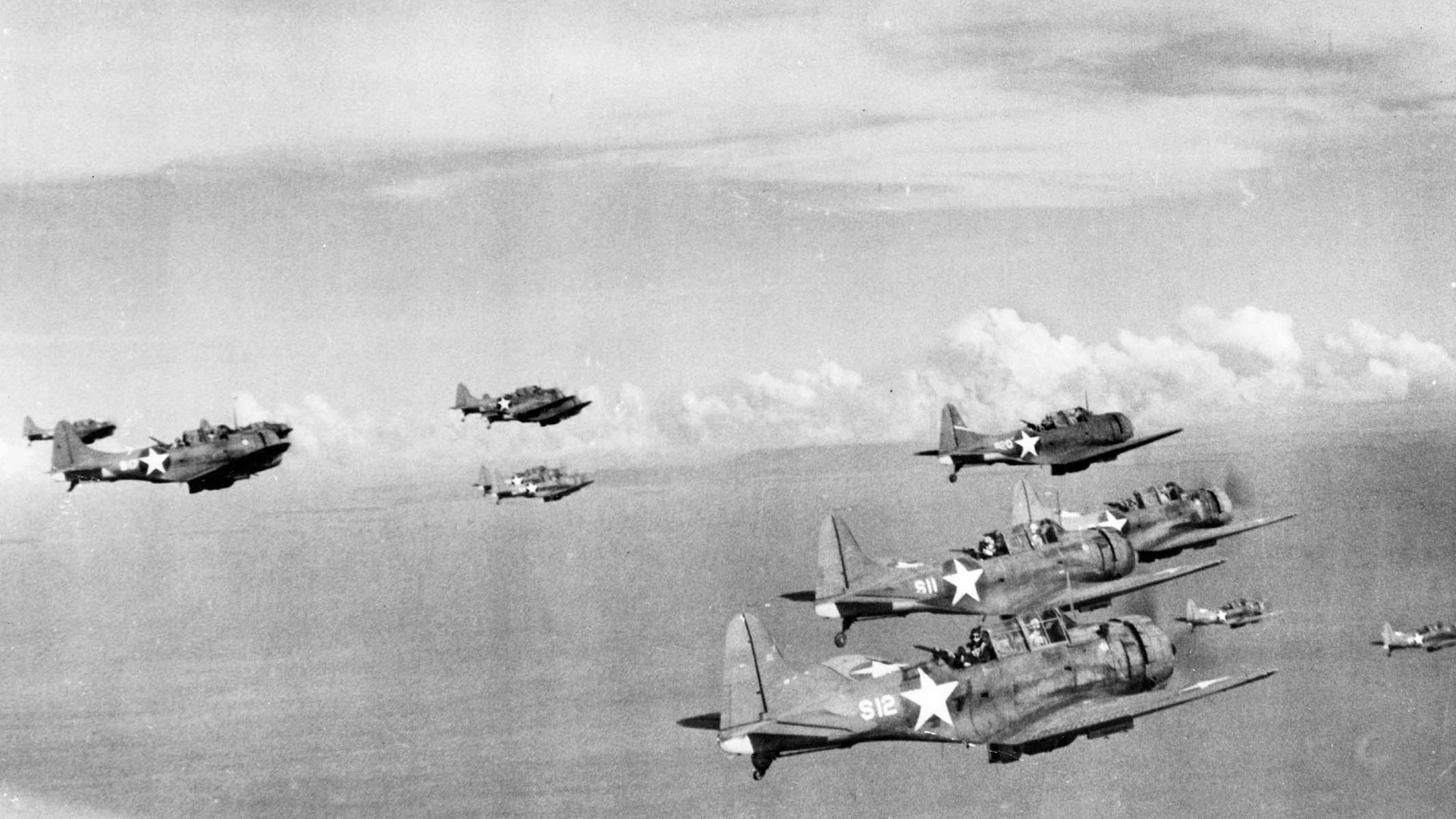

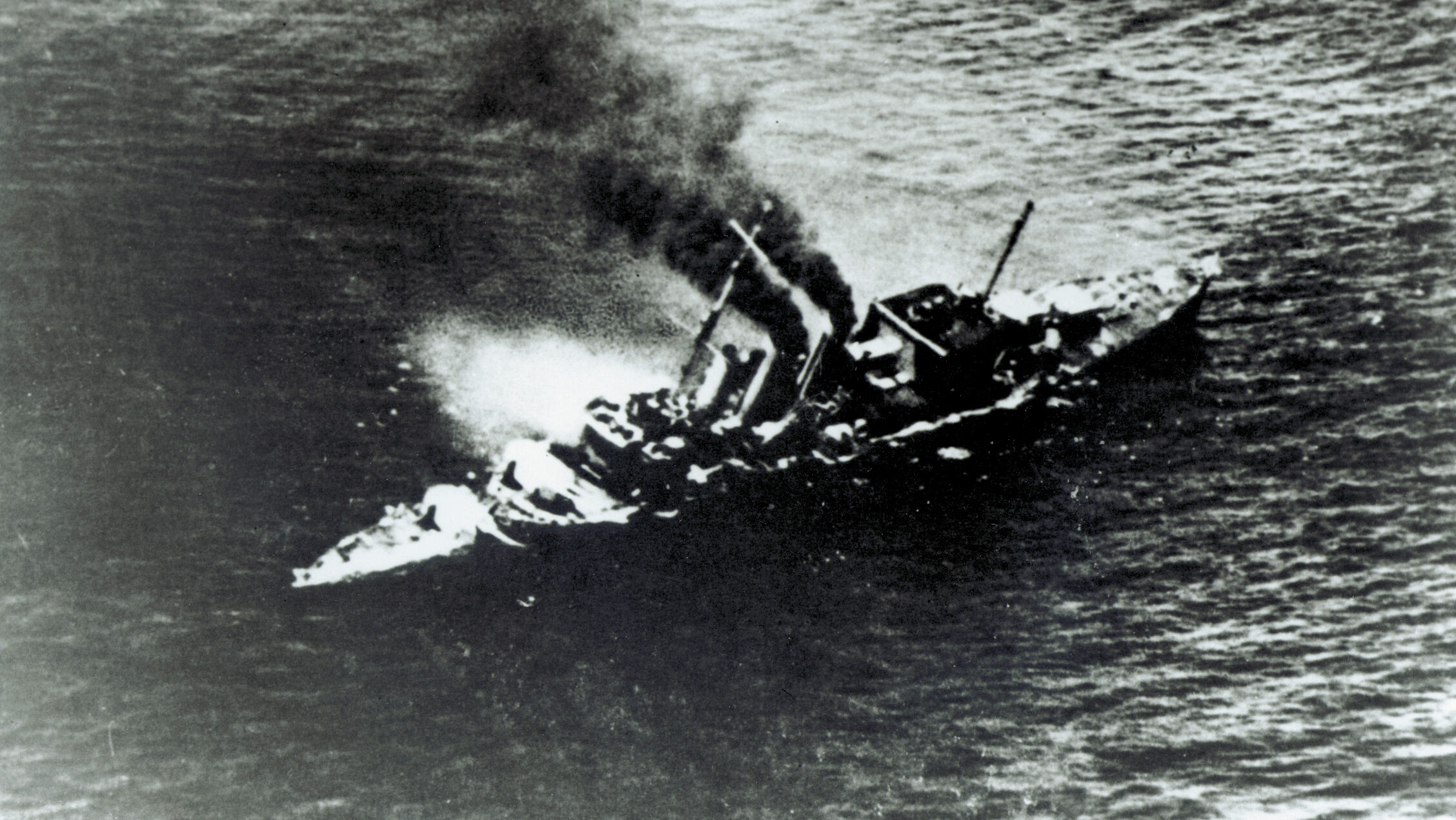
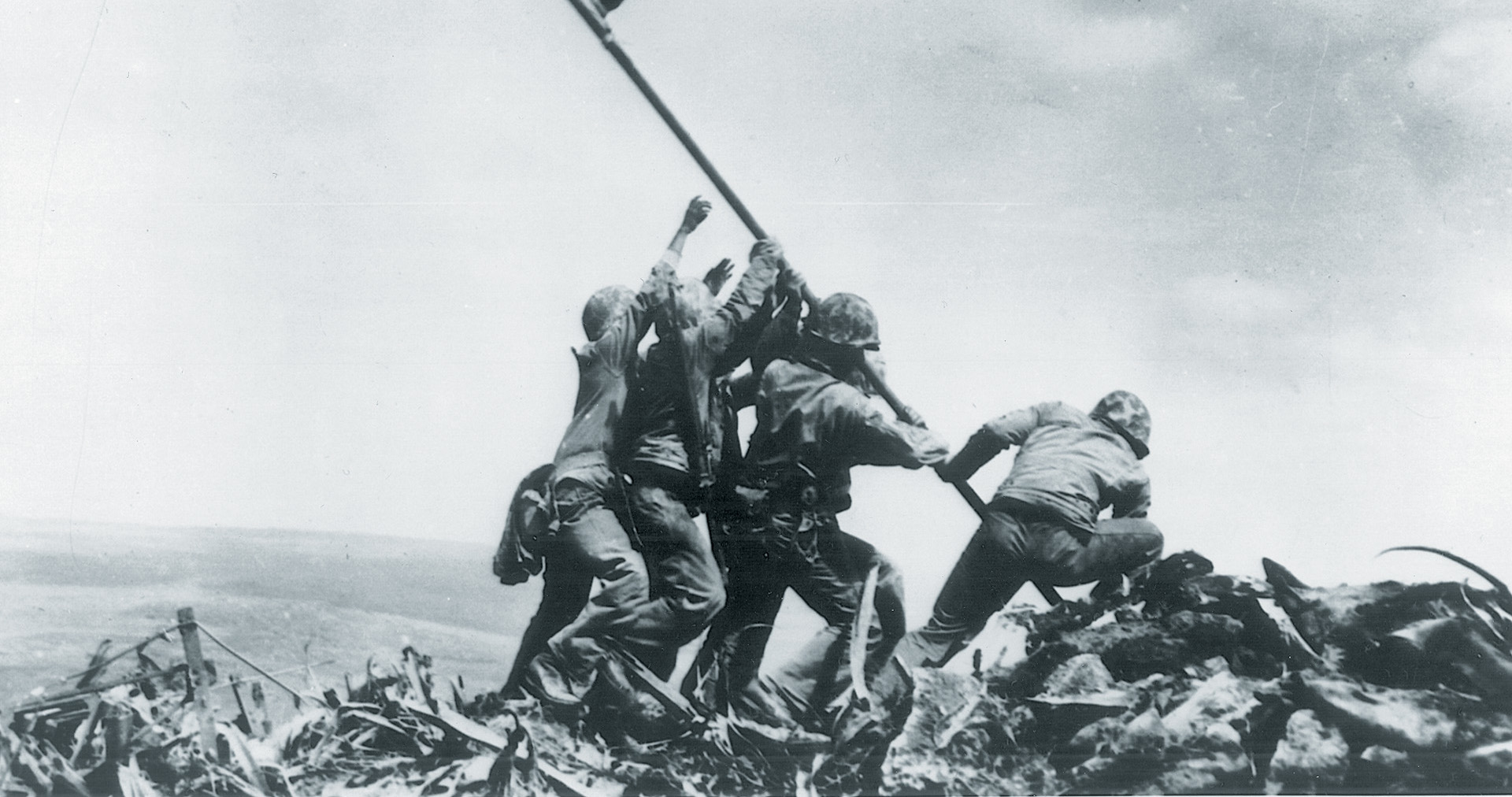
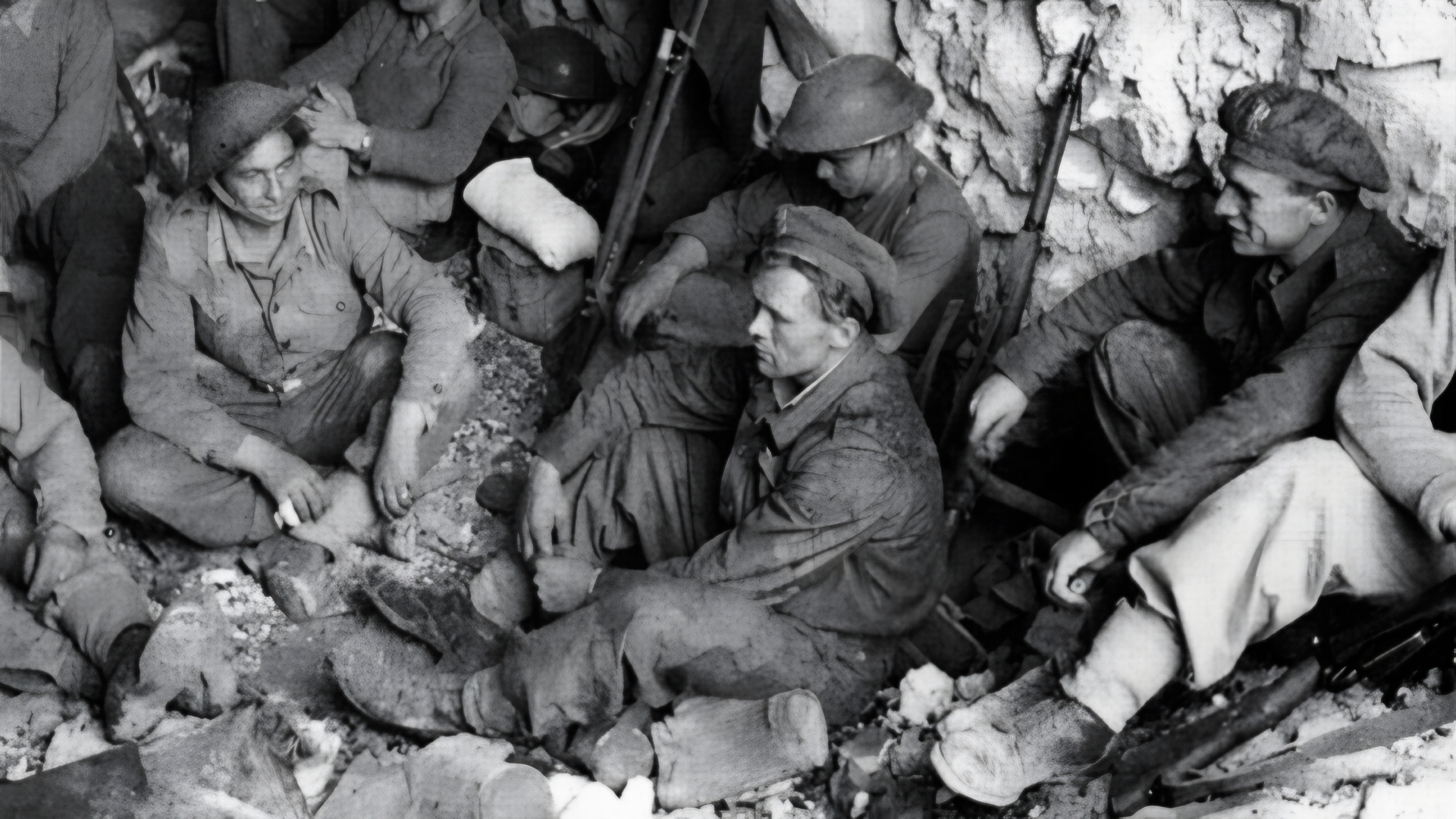
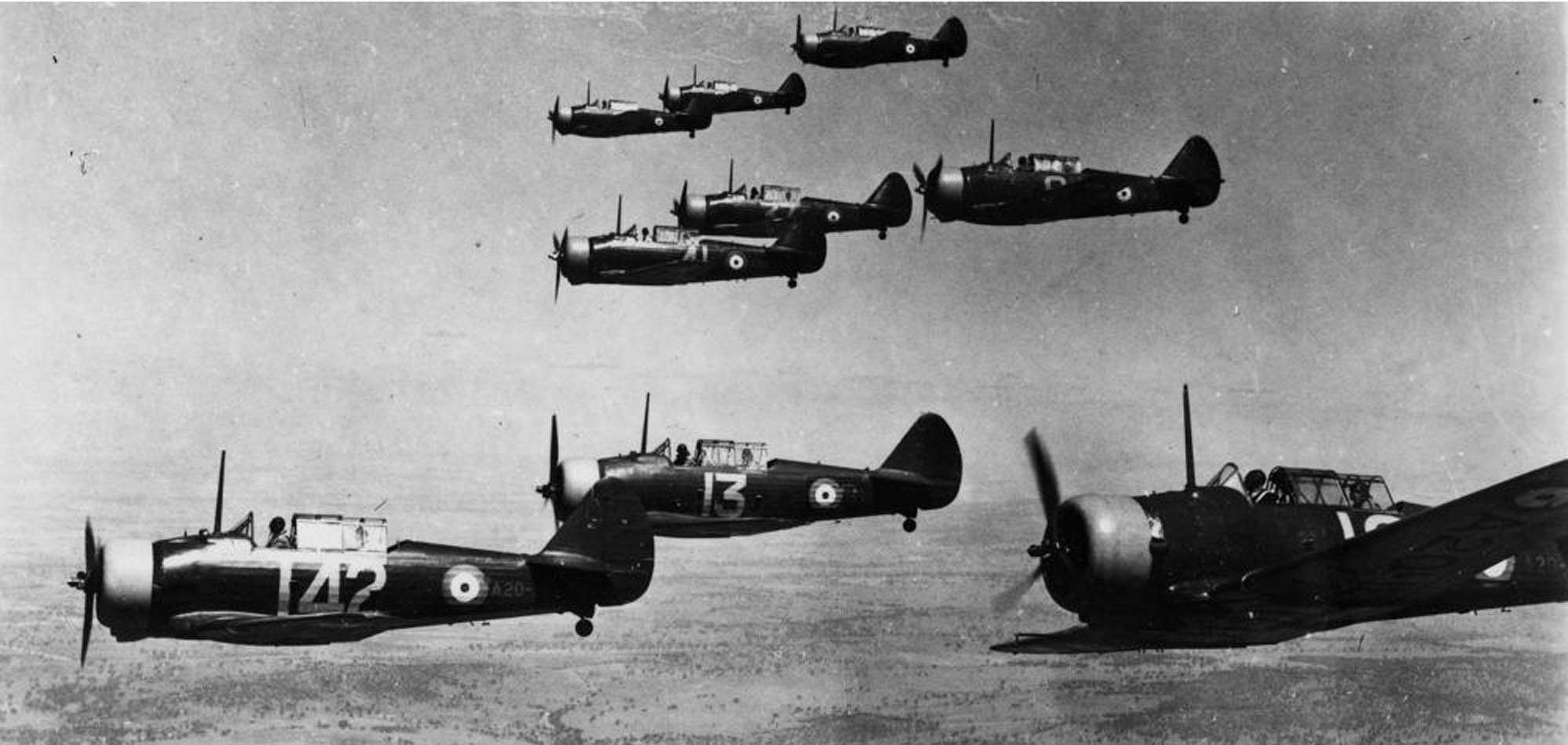
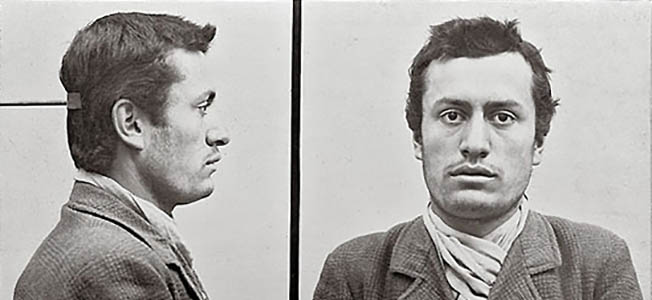
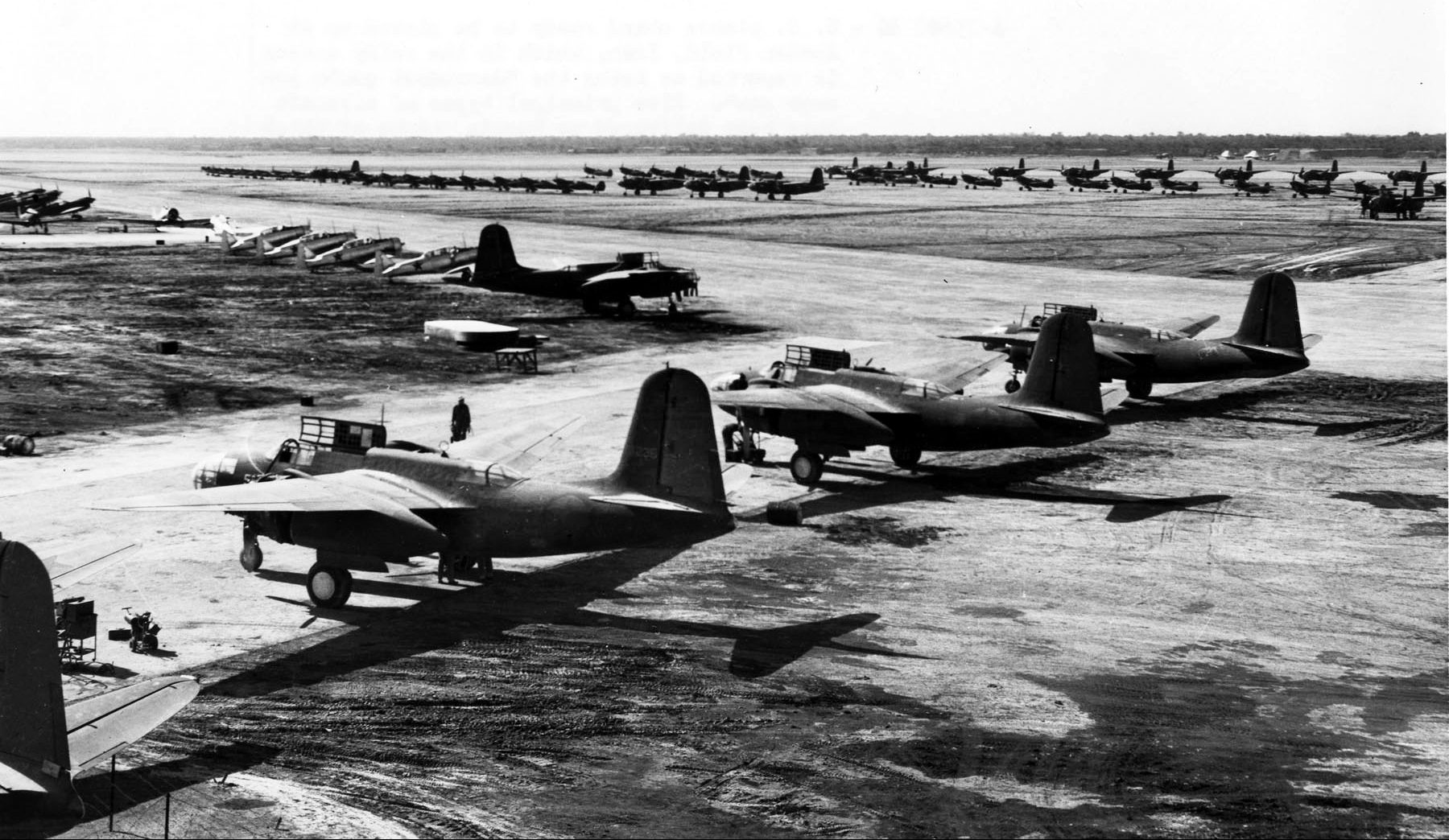
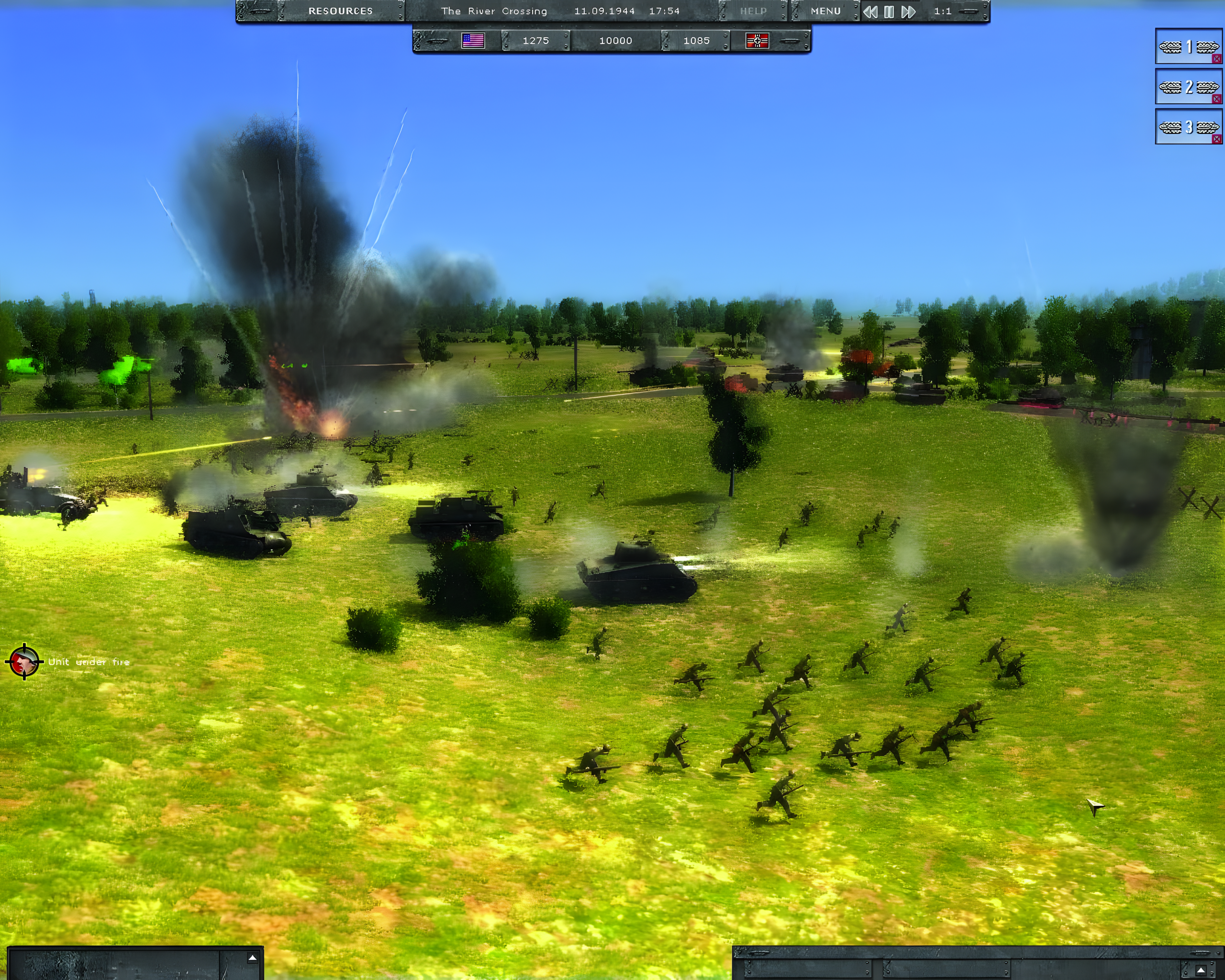
Join The Conversation
Comments
View All Comments